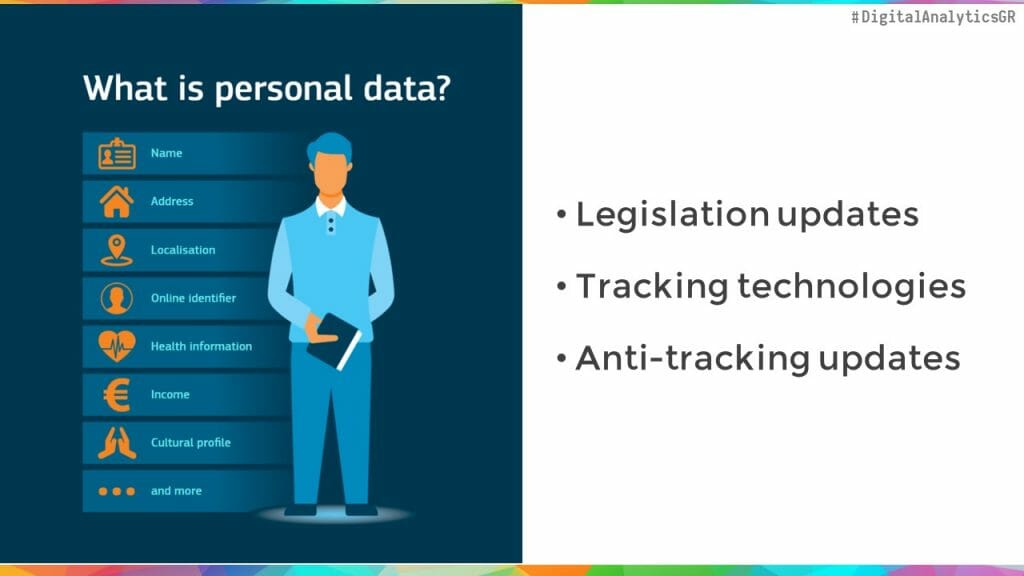Web analytics & Privacy
Over the past couple of years, we’ve seen a lot of changes in web analytics and privacy. We saw the release of GDPR and CCPA, the rise of ad-blockers (both in mobile and desktop devices), several releases of Safari’s ITP, Mozilla’s ETP and announcements from Google on similar browser changes in the beginning of 2020. One thing is for sure, the way web analytics was working before is evolving. It does not look like the wild west anymore and there are several rules someone needs to keep in mind when setting up the tracking for a website/mobile app.

It’s very difficult for a web marketer to keep track of all these changes and thins makes long-term reporting a real nuisance, as historical data consistency is a real challenge.
Gearing up for the future
In my talk for the Digital analytics meetup, I am hosting in Thessaloniki, I tried to help the local community understand how to manage all these changes.
The first step is to understand that the world wide web is a living organism and is constantly evolving. When you accept that, you need to understand what are the basic building blocks available. After all the web analytics has been around for at least the past 15 years (not the traditional web logging, which has been around since the WWW existed, but modern web analytics setups). This means that basic building blocks are the ones the make all the difference while collecting data. The biggest change in the latest years is seen in how web analytics providers are processing data, to give them more value, after collecting it.
Presentation overview
My presentation is split into 2 chapters:
The first one covers all the options available today on the web, allowing the identification of a certain individual:
- Cookies
- Localstorage / Sessionstorage
- Link decoration
- User accounts – Login
- Server-side tracking
- Shared device databases
- Fingerprinting
- Unique identifiers / interactions
A web marketer and a web analytics developer should be able to understand how each one of them works, what it offers and how it has evolved through time.
On the second chapter, I take a deep dive on the anti-tracking mechanisms available in the market today:
- DND – Do No Track
- Ad-blockers / Tracking firewalls
- Legislation (GDPR, CCPA etc.)
- Safari ITP
- Firefor ETP
- Chrome SameSite
You will find information on the impact of each mechanism, a description of how it works and how it can protect someone’s privacy and a brief walk-through of its previous releases.







